Startups, Corporate Accelerators, and Innovation: A Conversation
Jul 02, 2020

By Laila Partridge, Managing Director of the STANLEY + Techstars Accelerator
Launching a startup is never a cakewalk, but now, with coronavirus closures, new protocols, and established businesses fighting to remain viable, gaining a foothold is harder than ever.
Last Friday I moderated a discussion with three seasoned executives about how companies manage innovation in times of COVID-19. I spoke with:
Marty Guay, Vice President, Business Development at Stanley Black & Decker
Jeff Hochstadt, Chief Strategy Officer at Western Union
Terry Luciani, Vice President, Enterprise Innovation at MetLife
What emerged was a powerful set of insights including several insider tips for startup founders on how to approach, engage, and work with large corporations. I’ve captured a few below but listen to the entire discussion. It was a fascinating panel.
It’s About Synchronization, Not Speed
Startups like to think of themselves as innovative, nimble companies and view large corporations as slow, lumbering giants hampered by legacy systems.
Marty Guay presents a different perspective. He notes that because startups are chronically under resourced and “do not have a lot of oxygen to operate”, they need to focus on speed. Their small size enables them to be nimble. In contrast, “large organizations are not solving for speed, they are solving for synchronization.” When a large corporation efficiently coordinates company-wide resources (people, capital, functional disciplines…), market-moving projects can happen quickly. He gives the example of Tesla establishing a new factory in Asia in nine months. Such an effort is well beyond the means of a startup.
So why does this matter to a startup?
As corporations increasingly look for new ideas externally, there is tremendous opportunity for a startup to tap large company resources. Success depends on understanding how corporations operate. Marty summarizes: “You have to work with people who know how to work inside their company to get things done.” I work closely with Marty on the STANLEY + Techstars Accelerator and a good portion of our time is spent identifying the right people and resources to help our startups succeed. It is worth listening for Marty’s specific advice on this topic.
Legacy Perception versus Brand Value
The negative legacy perception is addressed by Jeff Hochstadt. In describing the advantages of working with a large organization, he notes the advantages a 170+ year old brand has, especially one with 550,000 locations worldwide. Western Union’s global footprint and experience managing a highly regulated business at the local level is a strategic asset. The company’s broad reach provides nuanced insights into differences across markets and a global perspective on market trends not always accessible to startups. Terry Luciani reinforces the importance of consumer brand trust — especially, in regulated markets.
Jeff points out that in regulated industries startups don’t encounter the costs of regulatory compliance until they’ve grown beyond the larval stage. Pairing with Western Union and MetLife enables startups to tap that deep knowledge base early and avoid costly mistakes.
So why do large corporations engage with startups?
Jeff talks about the cultural benefits of a startup’s “let’s make it happen” energy, transforming Western Union attitudes from “don’t think of all the reasons why something doesn’t work, but think about how you can make it happen”. Terry discusses broader experimentation and how new ideas can be quickly brought to a large number of consumers — testing more products, adding value to corporate customers, and creating instant markets for small companies.
How Do Corporations Choose Startups?
Terry describes the MetLife process for engagement with startups. “It starts with business requirements. We do not engage because a startup is cool. We bring in a startup because there is a need.” He describes how it begins by identifying that need and finding the right internal MetLife sponsors. The next step is building a structured set of criteria to prove the value of the startup to MetLife. “Using a set of clearly defined metrics, the conversations about partnership and integrating that startup’s new capability within MetLife becomes easier.”
If you watch the video, check out Terry’s chat comments. In response to a question about corporate M&A decisions, Terry clarifies: The first choice is reuse before buy. Then comes buy before build. Building is for when the opportunity is truly core and will be a differentiator.
COVID, COVID, COVID
The impact of COVID-19 comes up frequently, with heightened focus on serving customers well and keeping employees safe in the factory and at home. Marty humanizes Zoom usage post-COVID-19, “I used to get frustrated and think less of someone’s professionalism when I heard a dog barking in the background – now I want to know the dog’s name.” Terry lightens the discussion with the popular meme, “What is driving digital transformation, CEO, CTO, or COVID?” All agree that COVID-19 has accelerated every trend in the world (digitization, remote learning, access to healthcare, inequality, etc...) and offer specific advice to founders:
Create a clear, compelling elevator pitch
Do your homework (read the annual report, recent press releases, etc.)
Actively listen to and understand the need. Validate, then fill that need.
Understand where value is created and align yourself. It is about productivity, cost savings, growth, and compliance.
Bring passion, knowledge, expertise, and humility to your startup endeavor!
This was a great conversation full of solid advice on the basics of good business.
This article originally appeared on Laila Partridge's blog.
About the Author

Laila Partridge
Laila Partridge is the Managing Director of the STANLEY+Techstars Accelerator which helps startups building solutions using Artificial Intelligence for Advanced Manufacturing. Follow her on Twitter at @TechstarsLaila and read her blog on Advanced Manufacturing at LailaPartridge.com.

